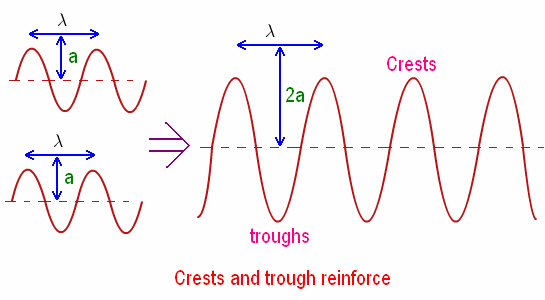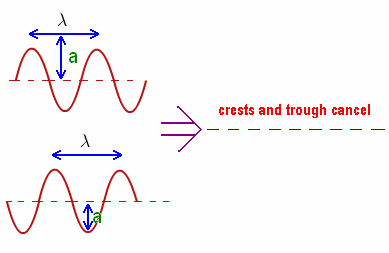How do beats help determine whether two sound waves are of the same frequency?
1 Answer
The closer the frequencies of the wave are to each other, the less frequent the beats. When two waves have the same frequency, there will not be any beats.
Explanation:
Beats come from interference between two waves. Interference can be either constructive or destructive, depending on the phase of the interacting waves.
Constructive interference occurs when the two waves are in phase. When constructive interference occurs, the resulting wave will be amplified. A laser is an example of a light wave that is experiencing constructive interference.

Destructive interference occurs when two waves are out of phase. The waves will then cancel each other out.

Beats occur when two sound waves are nearly in phase. The resulting wave will oscillate between constructive and destructive interference. The closer the two waves are two being in phase, the longer the period of oscillation, meaning the farther apart the beats will be.
 )
)
When the beats stop happening, the two sound waves will have the same frequency. That is how musicians can tell if their instruments are in tune with the rest of the ensemble.

